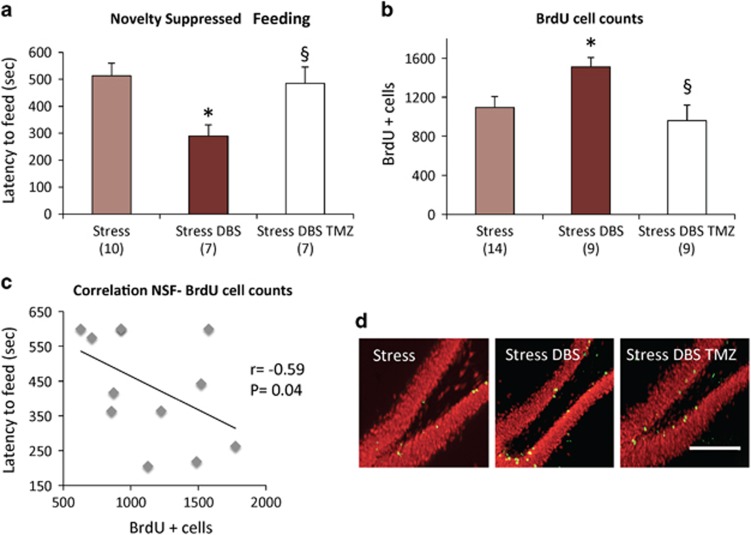Figure 4.
Temozolomide (TMZ), novelty-suppressed feeding and neurogenesis. (a) Effect of DBS and DBS TMZ in stressed animals calculated as percentage scores in relation to animals given stress alone. Animals receiving DBS had a significant decrease in the latency to feed, an effect that was practically blocked by TMZ (P=0.02). (b) Cell counting revealed that TMZ has virtually reversed a stimulation-induced increase in BrdU+ cells in DBS-treated stressed rats (P=0.004). (c) In addition to group differences in behavioural performance, a significant negative correlation was found between BrdU+ cell counts and latency to feed in the NSFT. (d) Photomicrographs of the hippocampal dentate gyrus illustrating BrdU+ cells (green) dispersed in the granule cell layer (NeuN in red). '*' indicates significant difference between Stress+DBS and non-stimulated stressed animals. '§' indicates significant difference between Stress+DBS and Stress+DBS+TMZ. Values are means and s.e.. Group sizes are indicated in parentheses. Horizontal bar in d, 200 μm. BrdU, 5-bromo-2′-deoxyuridine; DBS, deep brain stimulation; NSFT, novelty-suppressed feeding test.

